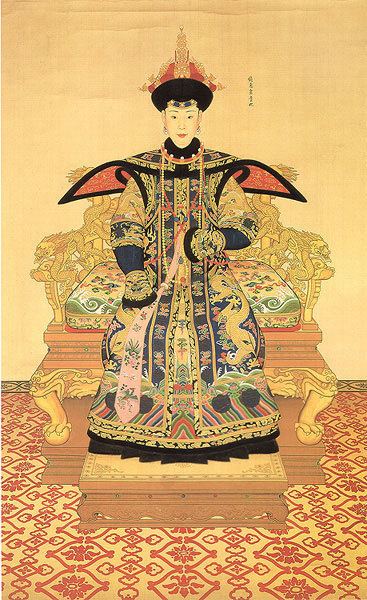Father Su Zhaonan Died 1760 Grandchildren Mien-k'ing | Name Imperial Consort Parents Su Zhaonan | |
 | ||
Issue YongzhangYongrongHeshuo Princess Hejia House House of Su (by birth)House of Aisin-Gioro (by marriage) Children Yongrong, Prince Xun of the Second Rank, Heshuo Princess Hejia Similar People Qianlong Emperor, Empress Xiaoyichun, Consort Shu | ||
Imperial Noble Consort Chunhui (1713 – 1760) was a consort of the Qianlong Emperor of the Qing Dynasty.
Contents
Biography
Imperial Noble Consort Chunhui was a Han Chinese and her family name was Su (蘇). Her personal name is unknown. Her father was Su Zhaonan (蘇召南). Born during the reign of the Kangxi Emperor, Lady Su entered the Forbidden Palace during the Yongzheng Emperor's reign and became a concubine of Yongzheng's fourth son Hongli.
In 1735 the Yongzheng Emperor died and was succeeded by Hongli, who became known as the Qianlong Emperor. Lady Su was then granted the title of Imperial Concubine Chun (純嬪). In 1737 she was promoted to the rank of Consort Chun (純妃). Eight years later in 1745 she was elevated to the status of Noble Consort Chun (純貴妃). In 1760 she was conferred the title of Imperial Noble Consort Chun (純皇貴妃), making her second only to the Empress in the imperial harem.
Lady Su died in 1760 and was posthumously honoured as Imperial Noble Consort Chunhui (純惠皇貴妃). She was interred in the Yuling Mausoleum (裕陵) for concubines of the Qing emperors.
Error in name
The Draft history of the Qing dynasty (清史稿) incorrectly recorded Imperial Noble Consort Chunhui's surname as Sugiya (蘇佳). While some Qing era imperial consorts who were of Han Chinese origin changed their family names to Manchu clan names after marrying the emperors, Imperial Noble Consort Chunhui never changed hers. This was because she came from a lesser background (her father was a commoner) and her family was thus not eligible for acquiring a higher social status. (During the Qing Dynasty, some Han Chinese imperial consorts and their families were able to acquire a higher social status by being promoted to one of the Manchu Eight Banners. They were then allowed to change their Han Chinese family names to Manchu clan names to reflect their new status.)
